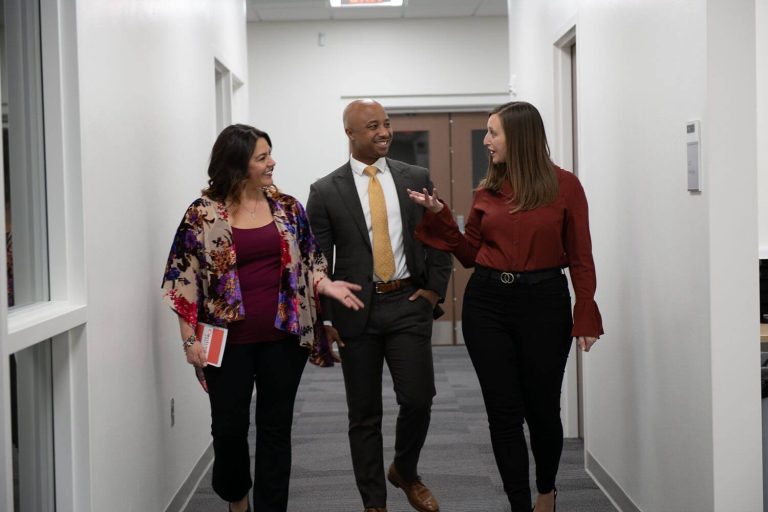Writing Alt Text: Why You Need It and How to Write It
Alternative text or “alt text” is imperative to your business’s website and blog posts. Also known as “alt tags” or “alt descriptions,” alt text is the small but mighty device you may be missing. But, what on earth is it? How do you write alt text? Is writing alt text complicated? Do you need to include it? Strap in because alt text is about to change your business’s “behind the scenes” trajectory.
What is Alt Text?
Alt text appears in place of an image when the electronic device can’t access it. So, viewers get a short blurb of descriptive text instead of a blank square or rectangle popping up. Alt text is brief, specific, and necessary for most photos on your website. When it comes to brand logos or general website “fluff,” descriptive alt text isn’t required. You can then get away with the “company logo” or nothing at all if something is strictly decorative.
Alt text is descriptive but not chocked full of keywords or too much fluff. It’s simple without being a repeat of the image’s title, which is in a different location. It pops up on the photo when the user’s cursor rests on top of it. Titles are different from alt text and should not say the same thing. Differentiating the two is better for Search Engine Optimization.
Why is Alt Text Important?
Alt text is crucial for your business for three reasons: accessibility, image SEO, and user experience. Take the small step to include alt text for your photos and graphics, and you’ll soon realize that it’s not a small step at all. Your traffic and engagement are accessible to a much larger audience with alt text. It keeps your business circulating through search engines regularly!
Accessibility
Screen-reading tools use voiceovers to describe images to visually impaired individuals. When alt text is missing, screen readers have no way of describing an image to those that can’t view the photo themselves. Similarly, alt text is beneficial for those with sensory disorders or learning disabilities. You don’t want people to think of your business as not inclusive to those with disabilities. And, it’s simply the respectful thing to do.
Image SEO
SEO helps Google understand what your business’s website is about. When people Google “3-year-old boy on a playground running with an oversized basketball” and your bubble-making business has effectively included alt text, your website photos are likely to pop up. Consequently, your business becomes easier to find when your SEO is high. Including keywords in your alt text is beneficial for SEO. But, if including keywords compromises the description of a specific photo, don’t worry as much about the keywords. It’s far more essential to describe the image clearly.
User Experience
Not just users with disabilities appreciate alt text. Everyone does! We’ve all been in the annoying situation where our bandwidth was weak, and photos had difficulty loading. Alt text gives users in that situation an idea of what a picture is, even if they can’t see it. Alt text is a way you can go above and beyond for your audience. They go from, “Wow, this is so frustrating” to “Oh cool, that’s what that photo is!” When their experience is better, they return.
How to Write Alt Text
Now that you understand the importance of alt text, how do you write it? The best alt text is simple and says exactly what’s in the photo. The most important thing to remember when writing alt text is to keep it simple. Beyond that…
Things to consider when writing alt text:
- Keep it Short. Alt text is not an opportunity to rewrite everything on your website. Be specific, but remember that brevity is your friend here. Once you hit 125 characters, you should stop.
- Use Keywords. Let’s say we’re writing alt text for an apple orchard’s website. Bad alt text would read “six baskets of fruit in a field.” Because we want to highlight an apple orchard, the word “fruit” is too vague. Good alt text would read, “six baskets of Gala apples sitting in a field at Oakland Orchard.”
- Avoid Keyword Stuffing. You may want to add as many keywords as possible. Don’t! That’s what we call keyword “stuffing.” A stuffed sentence would read, “Oakland Orchard Gala apples six baskets in a green field during summer day apple picking.” Just include the important keywords, not every single one of them.
- Don’t Use Images as Text. If your image includes text that you’ve already written in a paragraph on the same page, don’t include it. There’s no reason to bombard viewers/listeners with repeated information. Your photos should supplement the text, not copy it.
- Don’t Use “Image Of.” Fully-sighted viewers can see if a photo is a photo. If they’re visually impaired, screen-reading tools will identify “image of” or “photo of” for them, so there’s no reason for you to include it in your alt text.
- Include All Words in the Image. Graphic designers/website designers often add flair to a page by including graphics. They break up large amounts of text and contribute to the information. You should only use graphics as long as you’re not repeating what’s already written on the website page. If you use them, be sure to include all the graphic words in your alt text. If you can’t summarize it, include a link to the full text.
Make Writing Alt Text Part of the Routine
It may take a few extra minutes to write alt text sufficiently, but it’s worth it. If you need some guidance in this area, feel free to contact Content Journey for help or advice. We can help you turn your lackluster alt text into effective common practice. And we love helping you on your content journey.








